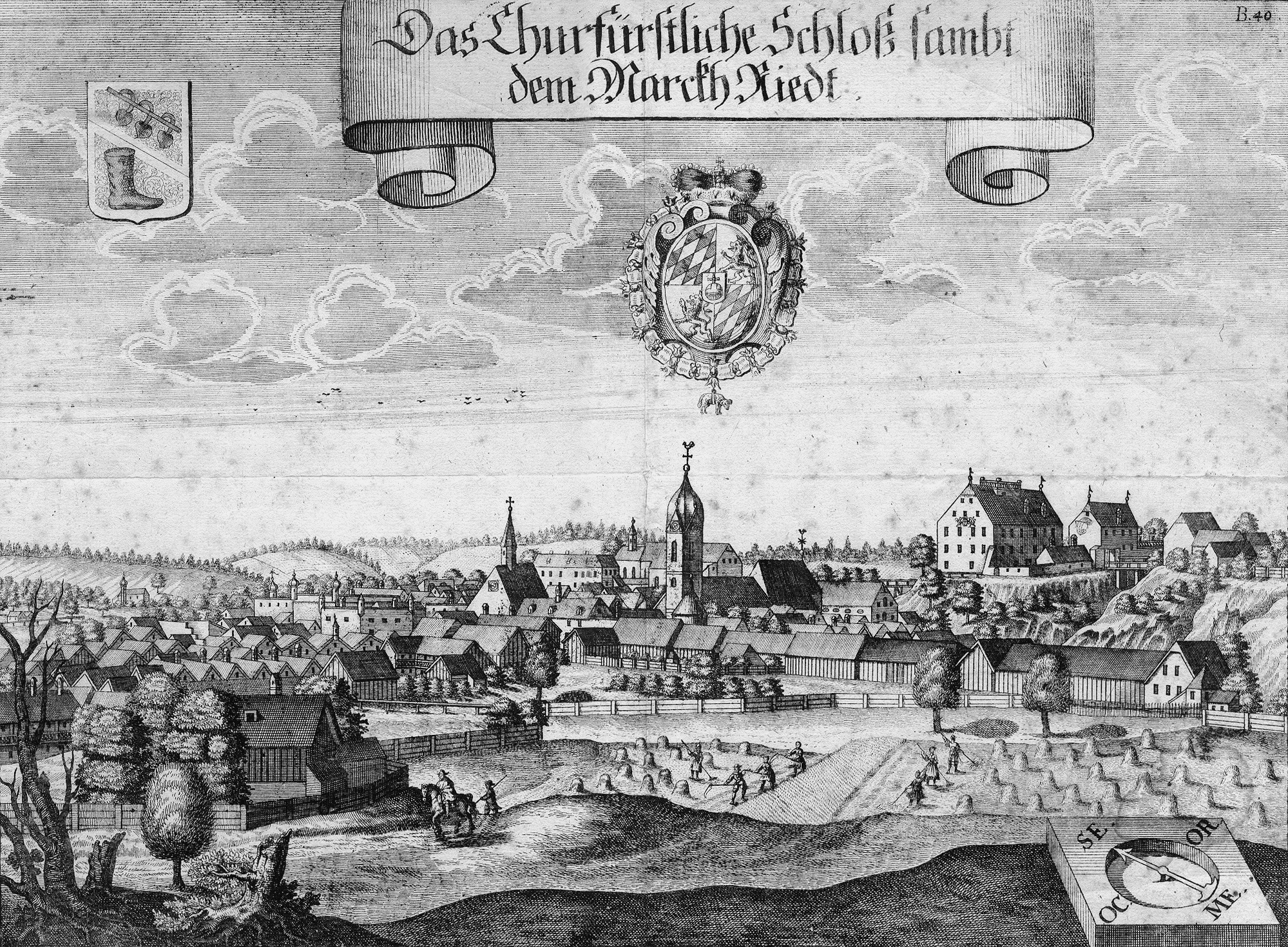
Welcome!
A warm welcome to Ried im Innkreis. We’re delighted that you’re interested in the history and sights of the town of Ried and we hope you enjoy learning about our town on your walk.
Ried has a unique structure. The historic centre is made up of four squares: the Kirchenplatz, or church square, the Hauptplatz, or main square, the Rossmarkt, or horse market, and Stelzhamerplatz, or Stelzhamer square.
Two of the gates from the ancient fortifications are still in existence. The Braunau Gate and the Schärding Gate. Over the centuries, the squares and gates have been repeatedly renamed or have been given particular names by residents.
Start your walk on the main square by hearing some of the history of Ried.

The history of
the town of Ried
Ried is first mentioned in 1136 in a document from Reichersberg Abbey. A mere 50 years later another document refers to “urbani de riede”. These “inhabitants of Ried” lived only one and a half hours on foot from the Bavarian/Austrian border at Geiersberg. Ried was a highly accessible Bavarian market town. This ensured that it was coveted territory from the Middle Ages onwards. The result was that it was the subject of constant disputes and frequently changed hands between Bavaria and Austria. In 1200, at any rate, Ried formed part of the dominions of the Dukes of Bavaria. The marriage of Friedrich the Quarrelsome with Agnes of Merania of the House of Andech meant that control of Schärding-Ried passed to the Babenbergs in 1229. Although the marriage was dissolved in 1243 because it did not produce any children and Innviertel reverted to Bavaria, the subsequent rulers – Ottokar of Bohemia and the Habsburgs – continually laid claim to the area. Ried Castle was besieged by Austria on several occasions. In 1364, Ried was occupied by Duke Rudolf IV, the Founder. The castle and market town were destroyed. Tragically for Ried, Rudolf granted town status to Schärding only one day later. But Ried was rebuilt again close to the castle. 15 years later, the border dispute between Bavaria and Austria came to a provisional end. The treaty, signed in 1379, guaranteed peace. Ried flourished. The linen trade was particularly successful. At one time the town had up to 100 linen weaving mills.
The peace held for over 320 years. Border clashes between the Habsburgs and the Bavarian House of Wittelsbach kept flaring up and brought much suffering to the region, especially during the Wars of the Spanish and Austrian Succession. After the decline of the main Bavarian Wittelsbach line came the Bavarian War of Succession, in which Austria laid claim to the entire Duchy of Bavaria. But Innviertel only passed to Austria under the 1779 Treaty of Teschen.
Napoleon’s campaigns brought sweeping changes to the political landscape of Europe. In 1810, Innviertel once more became Bavarian again under the Treaty of Schönbrunn. Six years later, the era of Napoleon was over. Innviertel became part of Austria for good in 1816. The peace that followed, and Ried’s central location, brought economic benefits. Ried was finally granted its town charter in 1857. 10 years later, the first agricultural exhibition festival, was held. This was followed in the 1870s by the building of the Neumarkt to Simbach and Attnang to Schärding railway lines and the founding of Innviertel’s first grammar school. Ried became a town of trade fairs and schools. Ried is a business location that to this day remains the region’s centre for trade, shopping, schools and sports.
